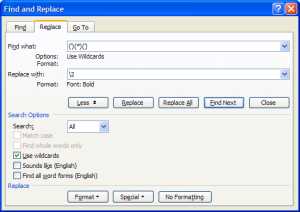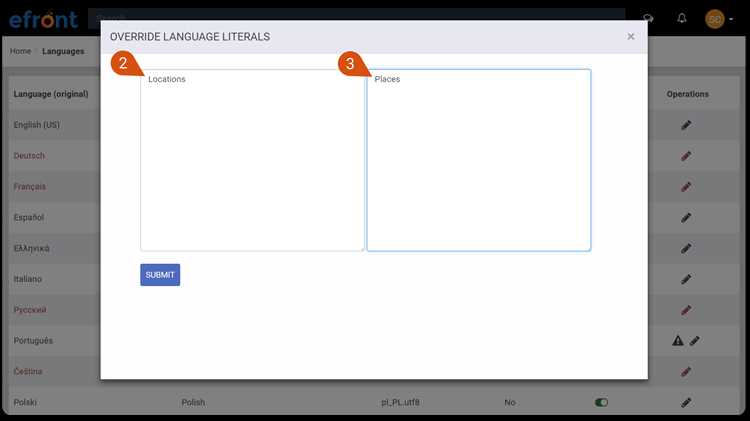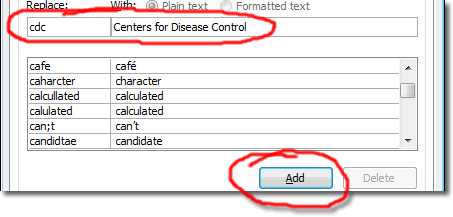Quoting someone can add credibility and depth to your writing, but what do you do if you want to remove a word from a quote without changing its meaning? Removing a word from a quote can be a delicate task, as it requires maintaining the integrity and accuracy of the original statement. However, with a few simple steps, you can successfully remove a word from a quote without distorting its intended message.
Step 1: Determine if the word you want to remove is crucial to the meaning of the quote. If the word is vital to understanding the context or if it significantly alters the point being made, it may be best to find an alternative quote.
For example, if the quote is “I love all types of music,” and you want to remove the word “all,” the meaning and emphasis of the statement may change. In this case, it’s better to find a quote that aligns more closely with your intended message.
Step 2: Use ellipses to indicate where the word has been removed. Ellipses are a set of three dots (…) and are used to show that a portion of the quote has been omitted. Place the ellipses where the removed word would normally appear within the quote.
Continuing with the previous example, if you decide to keep the quote “I love… types of music,” the ellipses indicate that a word has been taken out. However, it’s essential not to add or remove any other words from the original quote, as this can change its meaning or misrepresent the speaker’s intent.
Step 3: Provide context if necessary. Sometimes, removing a word from a quote can lead to ambiguity or confusion. If the omission of the word makes the statement less clear, consider adding a brief clarification or explanation within brackets.
For instance, if the quote is “I love… types of music,” and the removed word was “all,” you might add “[specifically, I love various genres like rock, jazz, and classical].” This addition provides additional context and ensures that the modified quote retains its intended meaning.
By following these easy steps, you can effectively remove a word from a quote while maintaining the accuracy and integrity of the original message. Remember to consider the impact of the removed word, use ellipses to indicate the omission, and provide context if necessary. Happy quoting!
The Importance of Removing a Word from a Quote
Quoting is an essential part of any writing or research project. It allows writers to incorporate the ideas and opinions of others to support and strengthen their own arguments. However, there may be instances where it is necessary to remove a word from a quote to better align it with the writer’s intended meaning or to improve the flow of their own writing.
Removing a word from a quote should be done with great care and consideration, as it can significantly alter the original meaning or context of the quote. It is crucial to ensure that the removal does not distort the author’s original intent or misrepresent their views.
Preserving Context:
When removing a word from a quote, it is essential to maintain the original context of the statement. The surrounding words and phrases must not be altered in a way that changes the overall message conveyed by the author. Care must be taken to avoid any misinterpretation or misrepresentation of the original source.
Improving Clarity:
Removing a word from a quote can also help improve the clarity and conciseness of the writer’s own work. Sometimes, a word in the original quote may be redundant, repetitive, or unnecessary for the writer’s purposes. Removing such words can help streamline the quote and make it more impactful.
Fitting the Style and Tone:
By removing a word from a quote, a writer can better integrate it into their own writing style and tone. Certain words may not align with the writer’s desired voice or may disrupt the overall flow of their work. Removing these words can help ensure that the quote seamlessly fits into the writer’s narrative without any jarring inconsistencies.
Avoiding Plagiarism:
Properly removing a word from a quote is vital to avoid unintentional plagiarism. When using someone else’s words, it is crucial to provide accurate attribution. If a word needs to be removed from a quote, it must be done in a way that does not change the original meaning while still properly citing the source.
Conclusion:
While removing a word from a quote may seem like a simple task, it requires careful consideration and attention to detail. Preserving the original context, improving clarity, fitting the writer’s style, and avoiding plagiarism are all essential factors to consider. By understanding and implementing these principles, writers can effectively remove a word from a quote while still maintaining the integrity and meaning of the original source.
Step 1: Understand the Context of the Quote
Before attempting to remove a word from a quote, it is important to first understand the context in which the quote is being used. By understanding the surrounding text and the purpose of the quote, you can determine if removing a word would alter the meaning or integrity of the quote.
Here are a few things to consider when understanding the context of the quote:
- Who said it: Take note of the person or source that the quote is attributed to. Understanding the credibility and expertise of the speaker can help in determining the importance of the quote and the impact removing a word may have.
- When it was said: The time and historical context in which the quote was made can also play a role in understanding its significance. The meaning of a word may change over time, so it is important to analyze the quote in the context of when it was said.
- The surrounding text: Look at the sentences before and after the quote to gain a better understanding of the overall message and tone of the text. This can help you determine if removing a word would disrupt the flow or coherence of the quote.
- The intended audience: Consider who the quote is intended for and what the author or speaker is trying to convey. Removing a word may drastically change the intended meaning or impact of the quote for the specific audience it was intended for.
By taking the time to understand the context of the quote, you can make an informed decision on whether or not it is appropriate or necessary to remove a word. This step is crucial in preserving the integrity and meaning of the original quote.
Step 2: Identify the Word You Want to Remove
Once you have chosen a quote that you want to edit, it is important to identify the exact word or words that you want to remove. Take a close look at the quote and determine which word is unnecessary or does not fit your desired message. Pay attention to any punctuation marks that may be attached to the word.
Here are some tips to help you identify the word you want to remove:
- Read the quote aloud: Sometimes, reading the quote aloud can help you pinpoint the word that needs to be removed. Pay attention to any words that feel out of place or disrupt the flow of the quote.
- Consider the context: Think about the overall context of the quote and the message you want to convey. If a particular word does not align with your intended meaning, it may be a good candidate for removal.
- Look for repetition: If you notice a word that is repeated multiple times within the quote, it might be worth removing one instance to improve the clarity and impact of the message.
- Examine the grammar and syntax: Analyze the grammar and sentence structure of the quote. If a word is grammatically incorrect or disrupts the syntax, it could be a word to remove.
Remember, the goal is to remove a word that improves the overall impact and clarity of the quote. Once you have identified the word you want to remove, you can proceed to the next step.
Step 3: Consider the Impact of Removing the Word
When removing a word from a quote, it is crucial to carefully consider the impact it will have on the overall message and context. Removing a word can alter the meaning of the quote and potentially misrepresent the original intent of the speaker.
1. Evaluate the Importance: Consider the importance of the word in the sentence. Does it provide crucial information or contribute to the overall tone or emphasis of the quote? Removing a word that carries significant meaning may result in a loss of clarity or distortion of the speaker’s intended message.
2. Analyze the Context: Examine the surrounding words and sentences to understand how the word interacts with the rest of the quote. Removing a word may disrupt the flow or coherence of the sentence, making it less effective or confusing to readers.
3. Check for Misrepresentation: Make sure that removing the word does not change the intended meaning or misrepresent the speaker’s viewpoint. Words can carry connotations and implications, so removing one may alter the speaker’s intended stance or message.
4. Seek Approval if Necessary: If the quote belongs to someone else or is part of a larger document or publication, it is important to seek approval from the original author or the relevant authorities before removing any words. Respect copyright guidelines and intellectual property rights.
By carefully considering the impact of removing a word, you can ensure that the edited quote maintains its integrity and accurately represents the original message or intent of the speaker.
Step 4: Find a Synonym or Suitable Replacement
Once you have identified the word you want to remove from a quote, it is important to find a suitable replacement or synonym. This step ensures that the modified quote remains grammatically correct and maintains its original meaning.
If the word you want to remove is important to the context or meaning of the quote, it is crucial to find a suitable replacement. This can be done by considering the synonyms or alternative phrases that convey the same idea.
Here are some steps to help you find a synonym or suitable replacement:
- Consult a Thesaurus: Use a thesaurus to find synonyms or similar words that can be used in place of the word you want to remove. Thesauruses provide alternatives that have similar meanings to help you choose the right replacement.
- Consider Context: Think about the overall context of the quote and the message it conveys. Select a replacement word that fits well within the context and maintains the same tone and intent.
- Read Aloud: After identifying a potential replacement, read the modified quote aloud to ensure that it flows smoothly and makes sense. This step helps you identify any awkward phrasing or inconsistencies before finalizing the replacement.
Remember, the goal of finding a synonym or suitable replacement is to maintain the integrity of the quote while removing the word you want to exclude. It is important to choose a replacement that seamlessly integrates into the original quote without altering its intended meaning.
Step 5: Decide Whether the Removal is Necessary
Once you have identified the word or phrase that you want to remove from the quote, it is important to carefully consider whether the removal is necessary. Removing a word or phrase can change the meaning or context of the quote, so it is crucial to make an informed decision.
Ask yourself the following questions:
- Does the removed word or phrase significantly alter the meaning of the quote?
- Will the removal improve the clarity or accuracy of the quote?
- Is the word or phrase potentially misleading or offensive?
If the answer to any of these questions is yes, then the removal is likely necessary. However, if the removed word or phrase is essential for accurately representing the original statement, it may be best to leave it in the quote.
It is important to remember that removing a word from a quote should only be done in cases where it is necessary for clarity, accuracy, or fairness. Misrepresenting someone’s words can lead to misunderstandings or even legal consequences.
After carefully considering the implications of removing a word or phrase from the quote, you can proceed to the next step to learn how to effectively execute the removal.
Step 6: Rewrite the Quote without the Word
After removing the unwanted word from the quote, you will need to rewrite the quote in a way that maintains its original meaning and context. Here are some steps to help you accomplish this:
- Read and understand the original quote: Carefully read the original quote to ensure you comprehend its intended message.
- Identify the removed word: Recognize the word that you have removed from the quote.
- Analyze the importance of the removed word: Consider the significance of the removed word and how it contributes to the meaning of the quote.
- Use implicit information: Look for implicit information within the quote that can help you rephrase it without the removed word.
- Find synonyms or alternative phrases: Search for synonyms or alternative phrases that can replace the removed word while retaining the quote’s original message.
- Consider the flow: Ensure that the rephrased quote maintains a smooth and coherent flow, without any abrupt changes or inconsistencies.
By following these steps, you can effectively rewrite the quote without the word that you wanted to remove. Remember to stay true to the original message and context while making the necessary adjustments.
Step 7: Review and Edit the Revised Quote
Once you have removed the unwanted word from the quote, it is essential to review and edit the revised quote to ensure it conveys the intended meaning accurately.
Here are some tips for reviewing and editing the revised quote:
- Check for grammatical errors: Make sure the revised quote is grammatically correct and free from any spelling mistakes. Pay attention to punctuation, verb agreement, and sentence structure.
- Ensure clarity: Review the revised quote to ensure it is clear and concise. If necessary, rephrase or clarify any ambiguous or confusing statements.
- Verify accuracy: Double-check the revised quote to ensure it accurately represents the original speaker’s words and maintains the overall context and meaning of the original quote.
- Consider tone and style: Evaluate the tone and style of the revised quote. Make sure it aligns with the desired tone and style for the overall piece.
- Review contextual relevance: Assess whether the revised quote fits seamlessly within the surrounding content. Ensure it still makes sense and contributes effectively to the article or document.
It is essential to take the time to review and edit the revised quote thoroughly. This step helps to maintain the integrity of the quote while ensuring it is accurate, clear, and aligned with the content’s tone and style.
Step 8: Evaluate the Effectiveness of the Removed Word
After removing a word from a quote, it is important to evaluate the effectiveness of the removal. Here are some key points to consider:
- Context: Assess whether the removal changes the overall context of the quote. Ensure that the meaning and intention of the original quote are preserved.
- Clarity: Determine if the removed word improves the clarity of the quote. If the word was confusing or unnecessary, its removal should enhance the reader’s understanding.
- Flow: Examine how the removal affects the flow and coherence of the quote. Ensure that the sentence structure remains intact and the removal does not disrupt the smooth progression of ideas.
- Impact: Consider the impact of the removed word on the overall message and tone of the quote. Evaluate whether its removal strengthens or weakens the intended impact.
By carefully evaluating the effectiveness of the removed word, you can ensure that the revised quote maintains its integrity and communicates the intended message effectively.
Question and answer:
How can I remove a word from a quote?
You can remove a word from a quote by following these easy steps:
Is it possible to remove multiple words from a quote?
Yes, you can remove multiple words from a quote using the same steps. Just repeat the process for each word you want to remove.
What if I accidentally remove a word I didn’t mean to?
If you accidentally remove a word from a quote, you can simply undo your action by pressing Ctrl+Z (or Command+Z on a Mac) to undo the deletion.
Can I remove a word from a quote without changing the meaning of the quote?
Yes, you can remove a word from a quote without changing its meaning, as long as the word you remove is not essential to the overall message or context of the quote.


